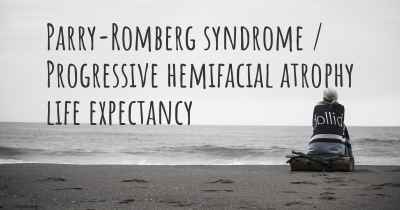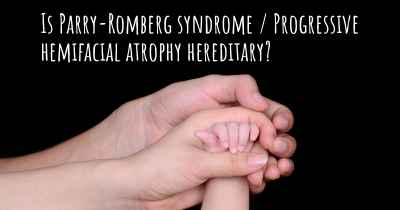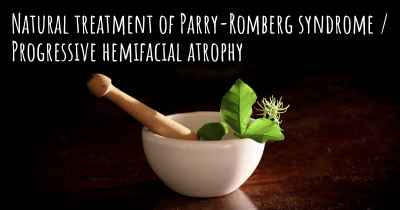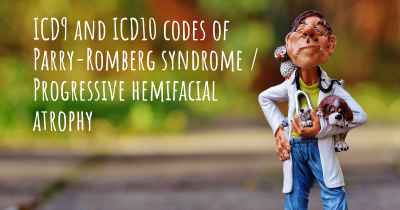What are the best treatments for Parry-Romberg syndrome / Progressive hemifacial atrophy?
See the best treatments for Parry-Romberg syndrome / Progressive hemifacial atrophy here
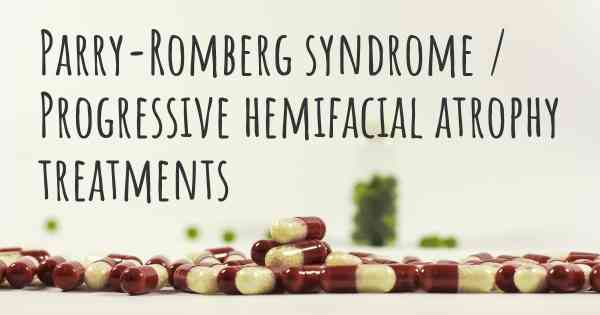
Treatments for Parry-Romberg Syndrome / Progressive Hemifacial Atrophy
Parry-Romberg Syndrome, also known as Progressive Hemifacial Atrophy, is a rare disorder characterized by the progressive wasting away of the tissues on one side of the face. This condition typically begins in childhood or adolescence and gradually worsens over time. While there is no known cure for Parry-Romberg Syndrome, there are various treatments available to manage its symptoms and improve the quality of life for affected individuals.
1. Medications
Medications can be prescribed to help alleviate some of the symptoms associated with Parry-Romberg Syndrome. These may include:
- Nonsteroidal anti-inflammatory drugs (NSAIDs): These can help reduce pain and inflammation in the affected areas.
- Corticosteroids: These powerful anti-inflammatory drugs may be used to control inflammation and slow down the progression of the disease.
- Immunosuppressants: In some cases, medications that suppress the immune system may be prescribed to help manage the autoimmune component of the condition.
2. Surgical Interventions
Surgery is often considered for individuals with Parry-Romberg Syndrome, particularly when there are significant cosmetic or functional concerns. The specific surgical procedures depend on the individual's needs and may include:
- Facial Reconstruction: This involves using various techniques such as fat grafting, tissue transfer, or implants to restore symmetry and volume to the affected side of the face.
- Orthognathic Surgery: In cases where the jaw or dental alignment is affected, orthognathic surgery may be performed to correct these issues.
- Nerve Grafting: If facial nerves are damaged, nerve grafting procedures can help restore function and improve facial movement.
3. Dental and Orthodontic Care
As Parry-Romberg Syndrome can affect the dental and oral structures, dental and orthodontic care is crucial. This may involve:
- Regular Dental Check-ups: Routine dental examinations can help identify and address any oral health issues promptly.
- Orthodontic Treatment: Braces or other orthodontic devices may be used to correct dental misalignments caused by the condition.
- Dental Implants or Prosthetics: In cases of tooth loss or severe dental abnormalities, dental implants or prosthetics can help restore function and aesthetics.
4. Symptom Management
While there is no cure for Parry-Romberg Syndrome, various strategies can be employed to manage its symptoms:
- Pain Management: Over-the-counter pain relievers or prescription medications can help alleviate facial pain or headaches associated with the condition.
- Physical Therapy: Physical therapy exercises and techniques can help maintain muscle strength, improve range of motion, and minimize muscle wasting.
- Psychological Support: Living with a visible facial deformity can have significant psychological and emotional impacts. Seeking support from therapists or support groups can be beneficial in coping with these challenges.
5. Experimental and Alternative Therapies
Some individuals with Parry-Romberg Syndrome may explore experimental or alternative therapies to manage their condition. These may include:
- Stem Cell Therapy: Stem cell treatments are being investigated as a potential avenue for tissue regeneration and facial reconstruction.
- Plastic Surgery Techniques: Innovative plastic surgery techniques, such as microvascular free tissue transfer, are being explored to improve outcomes for individuals with Parry-Romberg Syndrome.
- Complementary and Alternative Medicine: Practices like acupuncture, massage therapy, or herbal remedies may be considered to alleviate symptoms or improve overall well-being. However, their effectiveness is not scientifically proven.
It is important to note that the effectiveness of treatments for Parry-Romberg Syndrome can vary from person to person. Consulting with a team of healthcare professionals, including dermatologists, plastic surgeons, dentists, and other specialists, is crucial to develop an individualized treatment plan. Regular follow-ups and adjustments to the treatment approach may be necessary to address the evolving needs of the individual.
Posted Mar 4, 2017 by Hannah 1050
Different medications might help. I strongly advise you and your doctor to look up information and articles in medical libraries, in as many medical journals as you can, and find out the various ways people have been treated for this. Some use methotrexate, some have infusions of solumedrol, some take low doses of prednisone, etc. Find out your options! Ask your doctor for access to medical university libraries (physical and virtual) so you can learn about your own disease-- or ask for a referral to a doctor who can grant that access.
Posted Mar 4, 2017 by Barbara 1000
